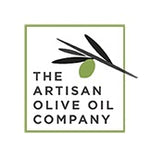Understanding Italian Olive Oil: Production, Regions & Quality Evolution
Italy’s Olive Oil Production in 2022/2023
According to data from ISMEA, Italy is expected to produce around 208,000 tons of olive oil during the 2022/2023 harvest season. Although this represents a significant decrease compared to the previous year, the country remains firmly positioned among the top five olive oil-producing nations in the world. Italian olive oil retains its reputation for excellence thanks to its artisanal heritage, wide geographic coverage and the extraordinary diversity of its olive cultivars.
A Unique Heritage of Olive Varieties
Italy is recognised internationally for the richness of its olive biodiversity. Flos Olei, the global olive oil guide, reports that Italy cultivates more than 100 olive varieties used in oil production. Olive groves span the entire country, from Sicily and Apulia in the south to Tuscany, Liguria and Lake Garda in the north, each region providing distinct terroir and climatic influences that shape flavour, aroma, and colour.
While nearly every region contributes to national production, the largest volumes of Italian olive oil come from Apulia, Sicily and Calabria, according to Statista. These regions include extensive olive orchards and modern mills, allowing producers to operate at scale and supply domestic and export markets.
The Rise of Premium Italian Olive Oil
Over the past 20 years, production methods have evolved dramatically. Inspired by the techniques of fine winemaking, pioneering regions like Tuscany initiated a shift toward premium early-harvest olive oils, prioritising complexity of flavour, freshness and antioxidant richness. By harvesting olives earlier—when they are still green—producers achieve oils with intense fruitiness, balanced bitterness and persistent peppery notes.
Many small artisanal mills across Italy have joined this movement, focusing on high-quality finishing oils that elevate everyday cooking and are increasingly favoured by chefs and home cooks.
👉 Explore our collection of premium Italian olive oils


